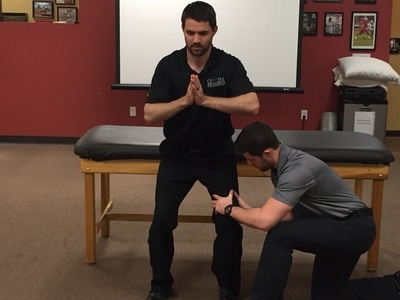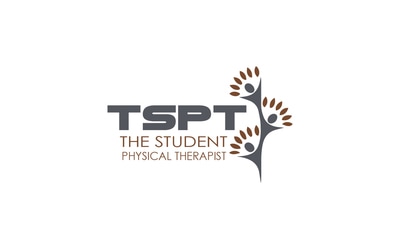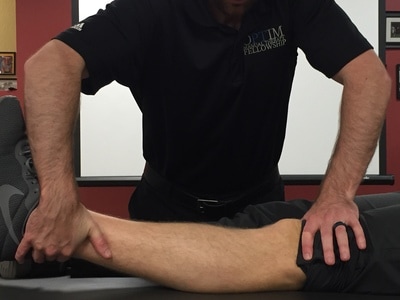- Home
- About Us
- TSPT Academy
- Online Courses
-
Resources
- Newsletter
- Business Minded Sports Physio Podcast
- Day in the Life of a Sports PT
- Residency Corner
-
Special Tests
>
-
Cervical Spine
>
- Alar Ligament Test
- Bakody's Sign
- Cervical Distraction Test
- Cervical Rotation Lateral Flexion Test
- Craniocervical Flexion Test (CCFT)
- Deep Neck Flexor Endurance Test
- Posterior-Anterior Segmental Mobility
- Segmental Mobility
- Sharp-Purser Test
- Spurling's Maneuver
- Transverse Ligament Test
- ULNT - Median
- ULNT - Radial
- ULNT - Ulnar
- Vertebral Artery Test
- Thoracic Spine >
-
Lumbar Spine/Sacroiliac Joint
>
- Active Sit-Up Test
- Alternate Gillet Test
- Crossed Straight Leg Raise Test
- Extensor Endurance Test
- FABER Test
- Fortin's Sign
- Gaenslen Test
- Gillet Test
- Gower's Sign
- Lumbar Quadrant Test
- POSH Test
- Posteroanterior Mobility
- Prone Knee Bend Test
- Prone Instability Test
- Resisted Abduction Test
- Sacral Clearing Test
- Seated Forward Flexion Test
- SIJ Compression/Distraction Test
- Slump Test
- Sphinx Test
- Spine Rotators & Multifidus Test
- Squish Test
- Standing Forward Flexion Test
- Straight Leg Raise Test
- Supine to Long Sit Test
-
Shoulder
>
- Active Compression Test
- Anterior Apprehension
- Biceps Load Test II
- Drop Arm Sign
- External Rotation Lag Sign
- Hawkins-Kennedy Impingement Sign
- Horizontal Adduction Test
- Internal Rotation Lag Sign
- Jobe Test
- Ludington's Test
- Neer Test
- Painful Arc Sign
- Pronated Load Test
- Resisted Supination External Rotation Test
- Speed's Test
- Posterior Apprehension
- Sulcus Sign
- Thoracic Outlet Tests >
- Yergason's Test
- Elbow >
- Wrist/Hand >
- Hip >
- Knee >
- Foot/Ankle >
-
Cervical Spine
>
- I want Financial Freedom
- I want Professional Growth
- I want Clinical Mastery
Valgus Stress Test
Purpose: To assess the integrity of the MCL.
Test Position: Supine.
Performing the Test: The patient's leg should be relaxed for this test. The examiner should passively bend the affected leg to about 30 degrees of flexion. While palpating the medial joint line, the examiner should apply a valgus force to the patient's knee. A positive test occurs when pain or excessive gapping occurs (some gapping is normal at 30 degrees). Be sure to not include rotation of the hip in your application of force. Next the examiner should repeat the test with the knee in neutral (0 degrees of flexion). A positive test occurs when pain or gapping is produced. There should be no gapping at 0 degrees.
Diagnostic Accuracy: At 30 degrees: Sensitivity: .86-.96 ("Tears of the medial collateral ligament: magnetic resonance imaging findings and associated injuries," "Evaluation of knee instability in acute ligamentous injuries").
Importance of Test: The medial collateral ligament is important for resisting valgus force at the knee due to its attachments along the femur, meniscus, and tibia. The MCL also plays a major role in restraining tibial external rotation. Surgical severing of the superficial portion of the MCL was shown to increase tibial external rotation at 90 degrees by about 3 times (Ellenbecker, 2000). According to Neumann, the MCL attaches to the medial epicondyle proximally and posterior to the distal attachment of the pes anserinus distally on the antero-medial tibia. The deeper fibers of the MCL are shorter than the superficial fibers and also attach to the posteromedial capsule, meniscus, and semimembranosus tendon. Because the deeper fibers are shorter than the superficial fibers, they are more likely to be injured when stressed with a valgus force, even though the superficial fibers provide the primary resistance to valgus force! The superficial fibers, on the other hand, are more likely to be stressed with external rotation of the tibia on the femur (or internal rotation of femur on tibia). With the attachment of the MCL to the meniscus, whenever the mechanism of injury affects the MCL, be sure to check the meniscus for injury as well. At 0 degrees, there is usually no gapping that occurs when a valgus stressed is applied, so if gapping occurs during the test, severe injury is suspected i.e. ACL, PCL, MCL, capsule (no gapping because the MCL, posteromedial capsule, hamstrings, oblique popliteal ligament, and parts of the ACL are most taut in full extension). In the position of 30 degrees, some gapping occurs, because the MCL and other structures are no longer stressed maximally, but the MCL is the primary stabilizer in this position. The MCL overall is one of the most important ligaments for stability of the knee. With a hypermobile knee, due to a sprained MCL, it is important to take extra precautions to decrease risk of further injury. With a lax MCL, the ACL becomes increasingly stressed with valgus forces, especially at 45 degrees of flexion (Ellenbecker, 2000). Remember the MCL is the primary valgus restraint in the flexed knee; without it, the ACL is prone to injury.
Note: these tests should only be used by properly trained health care practitioners
Test Position: Supine.
Performing the Test: The patient's leg should be relaxed for this test. The examiner should passively bend the affected leg to about 30 degrees of flexion. While palpating the medial joint line, the examiner should apply a valgus force to the patient's knee. A positive test occurs when pain or excessive gapping occurs (some gapping is normal at 30 degrees). Be sure to not include rotation of the hip in your application of force. Next the examiner should repeat the test with the knee in neutral (0 degrees of flexion). A positive test occurs when pain or gapping is produced. There should be no gapping at 0 degrees.
Diagnostic Accuracy: At 30 degrees: Sensitivity: .86-.96 ("Tears of the medial collateral ligament: magnetic resonance imaging findings and associated injuries," "Evaluation of knee instability in acute ligamentous injuries").
Importance of Test: The medial collateral ligament is important for resisting valgus force at the knee due to its attachments along the femur, meniscus, and tibia. The MCL also plays a major role in restraining tibial external rotation. Surgical severing of the superficial portion of the MCL was shown to increase tibial external rotation at 90 degrees by about 3 times (Ellenbecker, 2000). According to Neumann, the MCL attaches to the medial epicondyle proximally and posterior to the distal attachment of the pes anserinus distally on the antero-medial tibia. The deeper fibers of the MCL are shorter than the superficial fibers and also attach to the posteromedial capsule, meniscus, and semimembranosus tendon. Because the deeper fibers are shorter than the superficial fibers, they are more likely to be injured when stressed with a valgus force, even though the superficial fibers provide the primary resistance to valgus force! The superficial fibers, on the other hand, are more likely to be stressed with external rotation of the tibia on the femur (or internal rotation of femur on tibia). With the attachment of the MCL to the meniscus, whenever the mechanism of injury affects the MCL, be sure to check the meniscus for injury as well. At 0 degrees, there is usually no gapping that occurs when a valgus stressed is applied, so if gapping occurs during the test, severe injury is suspected i.e. ACL, PCL, MCL, capsule (no gapping because the MCL, posteromedial capsule, hamstrings, oblique popliteal ligament, and parts of the ACL are most taut in full extension). In the position of 30 degrees, some gapping occurs, because the MCL and other structures are no longer stressed maximally, but the MCL is the primary stabilizer in this position. The MCL overall is one of the most important ligaments for stability of the knee. With a hypermobile knee, due to a sprained MCL, it is important to take extra precautions to decrease risk of further injury. With a lax MCL, the ACL becomes increasingly stressed with valgus forces, especially at 45 degrees of flexion (Ellenbecker, 2000). Remember the MCL is the primary valgus restraint in the flexed knee; without it, the ACL is prone to injury.
Note: these tests should only be used by properly trained health care practitioners
References:
Ellenbecker, Todd. Knee Ligament Rehabilitation. Philidelphia, PA: Churchill Livingstone. 22, 92-93. Print
Garvin GJ, Munk PL, Vellet AD. "Tears of the medial collateral ligament: magnetic resonance imaging findings and associated injuries." Can Assoc Radiol J 1993; 44(3): 199-204.
Harilainen A. "Evaluation of knee instability in acute ligamentous injuries." Ann Chir Gynaecol 1987; 76(5): 269-273.
Neumann, Donald. Kinesiology of the Musculoskeletal System: Foundations for Rehabilitation. 2nd edition. St. Louis, MO: Mosby Elsevier, 2010. 531-532. Print.
Ellenbecker, Todd. Knee Ligament Rehabilitation. Philidelphia, PA: Churchill Livingstone. 22, 92-93. Print
Garvin GJ, Munk PL, Vellet AD. "Tears of the medial collateral ligament: magnetic resonance imaging findings and associated injuries." Can Assoc Radiol J 1993; 44(3): 199-204.
Harilainen A. "Evaluation of knee instability in acute ligamentous injuries." Ann Chir Gynaecol 1987; 76(5): 269-273.
Neumann, Donald. Kinesiology of the Musculoskeletal System: Foundations for Rehabilitation. 2nd edition. St. Louis, MO: Mosby Elsevier, 2010. 531-532. Print.
Copyright © The Student Physical Therapist LLC 2023



